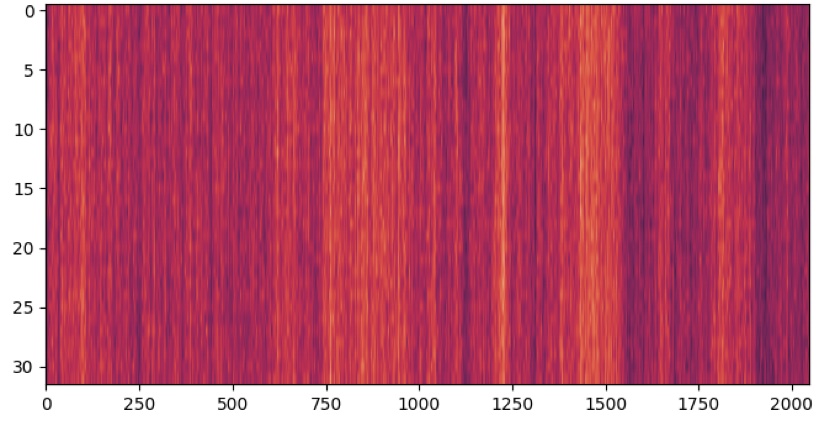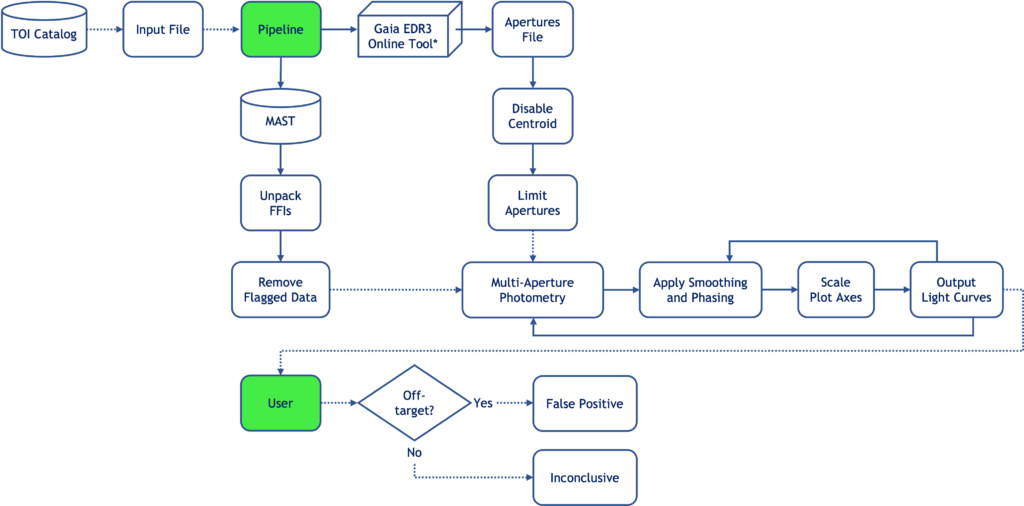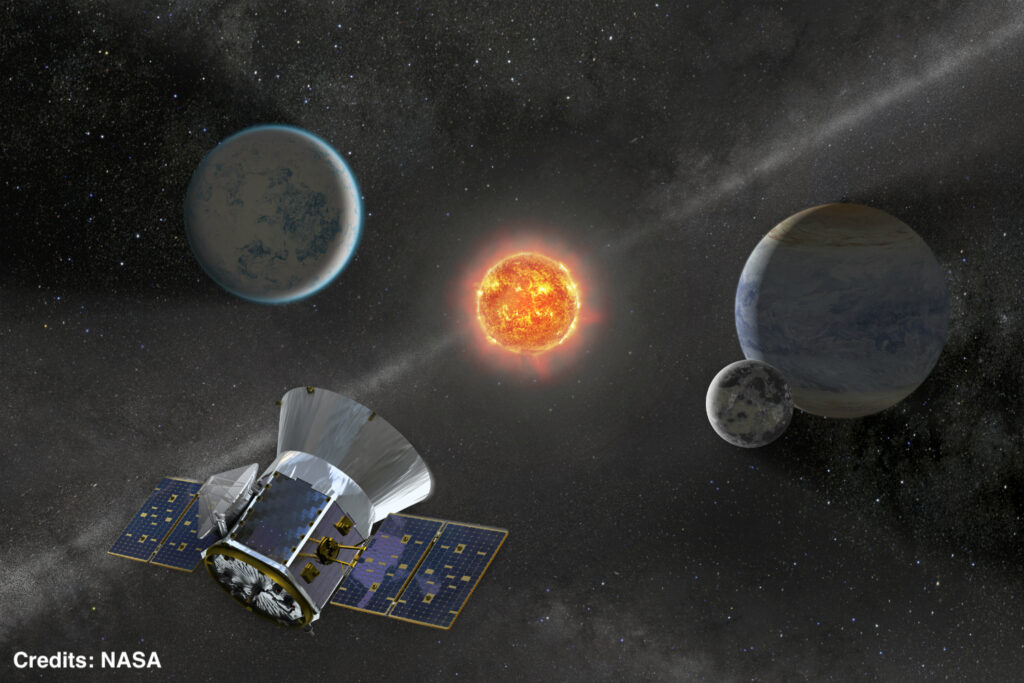High-Resolution Ground-Based Spectroscopy (2024 – present)
Advisors: Jerry Xuan, Prof. Dimitri Mawet
I am analyzing high-resolution ground-based spectra of a brown dwarf and its M dwarf host star. Our main aims are to compare the chemical makeup of the two objects and to search for 13CO, a molecule which may inform formation history.

Reducing 1/f Noise for JWST’s Near-Infrared Detectors (2023 – present)
Advisor: Dr. Néstor Espinoza
Currently, 1/f noise is the largest contributor to the noise floor of the James Webb Space Telescope’s near-infrared detectors. It manifests as vertical bands on acquired images, similar to the simulated image shown here, and this project explores reducing such noise through a Bayesian-based framework.

A Precision Mass Measurement of a Low-Density Saturn (2023 – present)
Advisors: William Balmer, Prof. David Sing
This project uses photometric data from TESS and ground-based spectroscopic data to provide a precise mass measurement of a low-density Saturn. Planet visualization on right from NASA Exoplanet Archive. More details soon!

Constraints on Transit Depth Variability with TESS (2022 – 2023)
Advisor: Dr. Néstor Espinoza
The Transiting Exoplanet Survey Satellite (TESS), although designed to discover new exoplanets, can offer equally if not more valuable insights on the population of known planets. In this project we use TESS data to study the variation of transit depth as a function of time. Preliminary results presented at AAS DPS54; complete results published in the Astronomical Journal.

Automating the Search for Nearby Eclipsing Binaries among TOIs (2021)
Advisor: Dr. Karen Collins
In this project, I developed an automated data pipeline for identifying nearby eclipsing binaries using Python and AstroImageJ scripting. It is capable of analyzing an arbitrary number of TOIs and performs steps including a MAST query, multi-aperture photometry, and lightcurve plotting. The pipeline is six times more efficient than analyzing targets manually. Shown on the right is the workflow of the pipeline. Presented at AAS DPS53.

Identifying False Positives within TESS Exoplanet Candidates (2021)
TESS pixels are large and numerous faint stars are often blended in the r ~ 3-pixel Quick-Look Pipeline apertures. Nearby eclipsing binaries blended in these apertures create eclipses that often masquerade as transiting planet signals. An alternate method I used to detect such false positives is to extract light curves from Full-Frame Images using small 1-pixel apertures placed at the known locations of Gaia stars near the target. To the right is an example of a nearby eclipsing binary I identified as part of this work, with the blue lightcurve being the target star’s and the red lightcurve the binary’s. Presented at TESS Science Conference II.

Junior Member of the TESS Follow-up Observing Program (2020 – present)
As a member of the Seeing-Limited Photometry group, I reduced photometric data collected by telescopes in the Las Cumbres Observatory Global Telescope Network and helped discover 12 exoplanets using the transit method. These included hot Jupiters, sub-Neptunes, and more. Parts of this research were presented at the Society for Astronomical Sciences Symposium, and I co-authored 24 (and counting) works.
